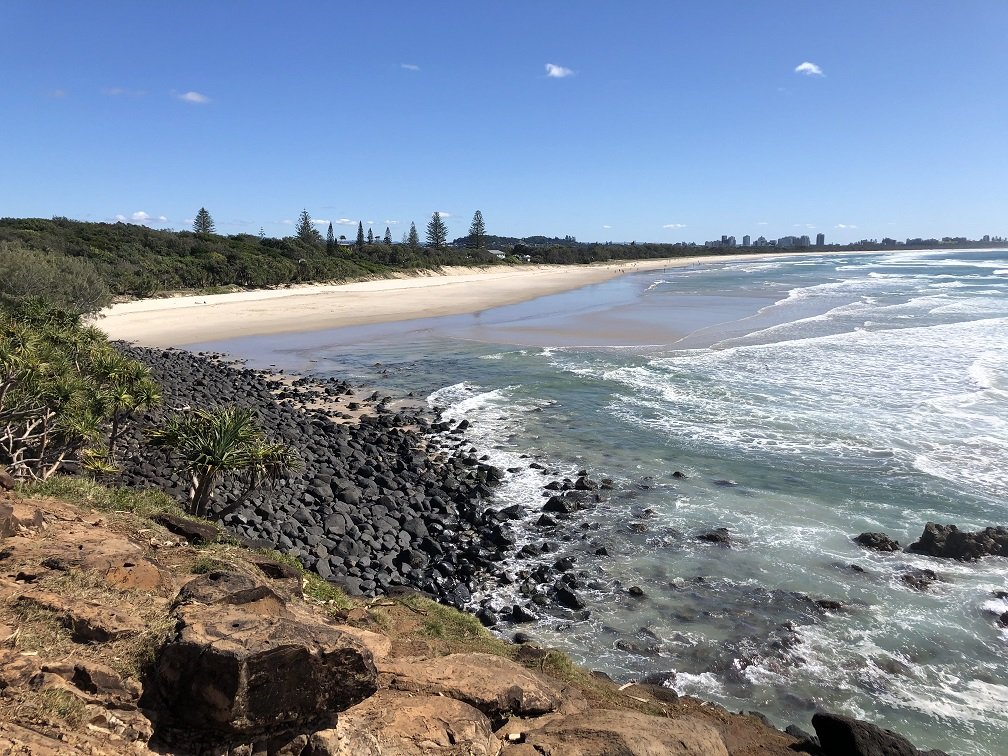August 2020 (ROTM#140) Fingal Head, NSW, Australia
There are several different types of rip currents that occur on beaches around the world. The most common one that I show on the Rip of the Month are what are known as 'channel' rips as they occupy a deeper channel between shallow sand bars. They are easiest to spot so that's where there's more pictures of them.
Another type is called a 'boundary' rip current which, as the name implies, flows along the side of a physical boundary. This boundary may be a natural headland or reef, or a structure such as a groyne, jetty or pier. I haven't got as many pictures of these, but I was recently in northern NSW visiting Fingal Head (which is an incredibly beautiful spot with amazing volcanic rock formations) and spotted this beauty running out alongside the headland.
There's a bunch of things to know about boundary rips. First, they form in two ways. One is when a longshore current moves water along the beach and then gets deflected offshore when it hits the boundary. The second is when water flows from the region where waves are breaking to where they aren't breaking on the protected side of the boundary (like in this photo). So this is why swimming next to headlands or structures is incredibly dangerous - there's likely to be a rip on both sides most of the time! It's also why you see surfers using them all the time to get out the back.
Another thing about boundary rips is that because they almost permanent, they erode out their own channel so still look like 'dark gaps'. You can see the rip follows the shape of the headland and is actually not that wide, about 5 m or less. But they also tend to flow faster and further offshore than most rips. This one went a lot further offshore than I could capture in this photo.
The other side of this headland is Dreamtime Beach, a social media darling (see my September 2018 ROTM#117) that has a very strong headland rip and is notorious for drowning and is not patrolled by lifeguards. So if you visit Fingal Head, please be careful, and swim between the red and yellow flags near the Fingal Head SLSC during patrolling season.
A screaming boundary rip against the rocks

